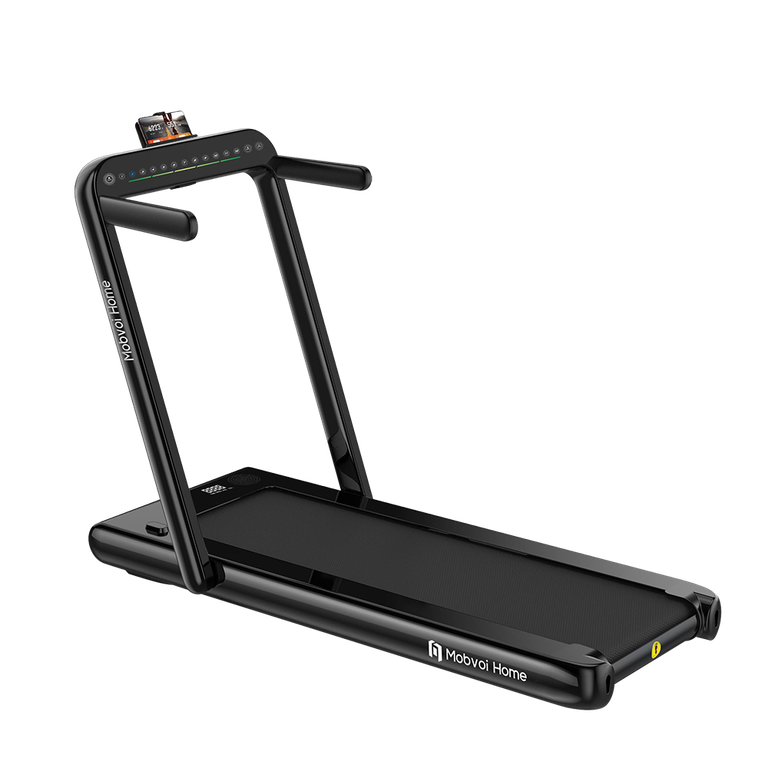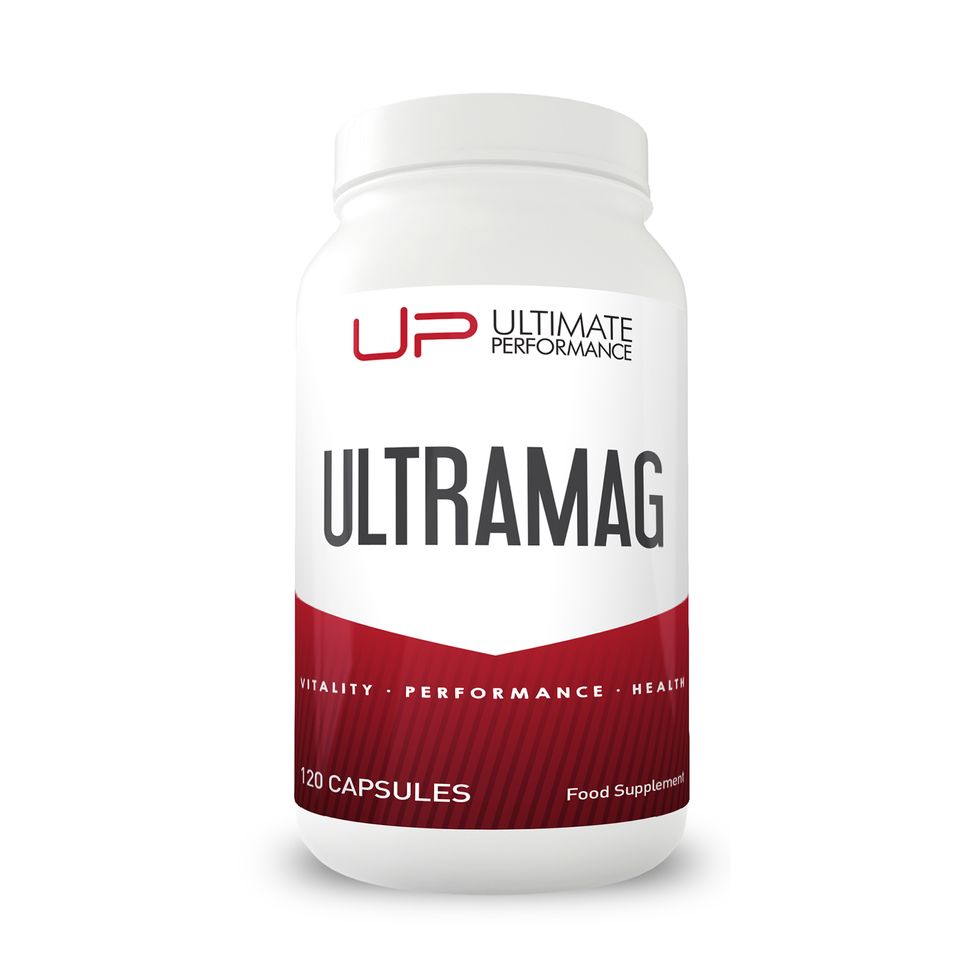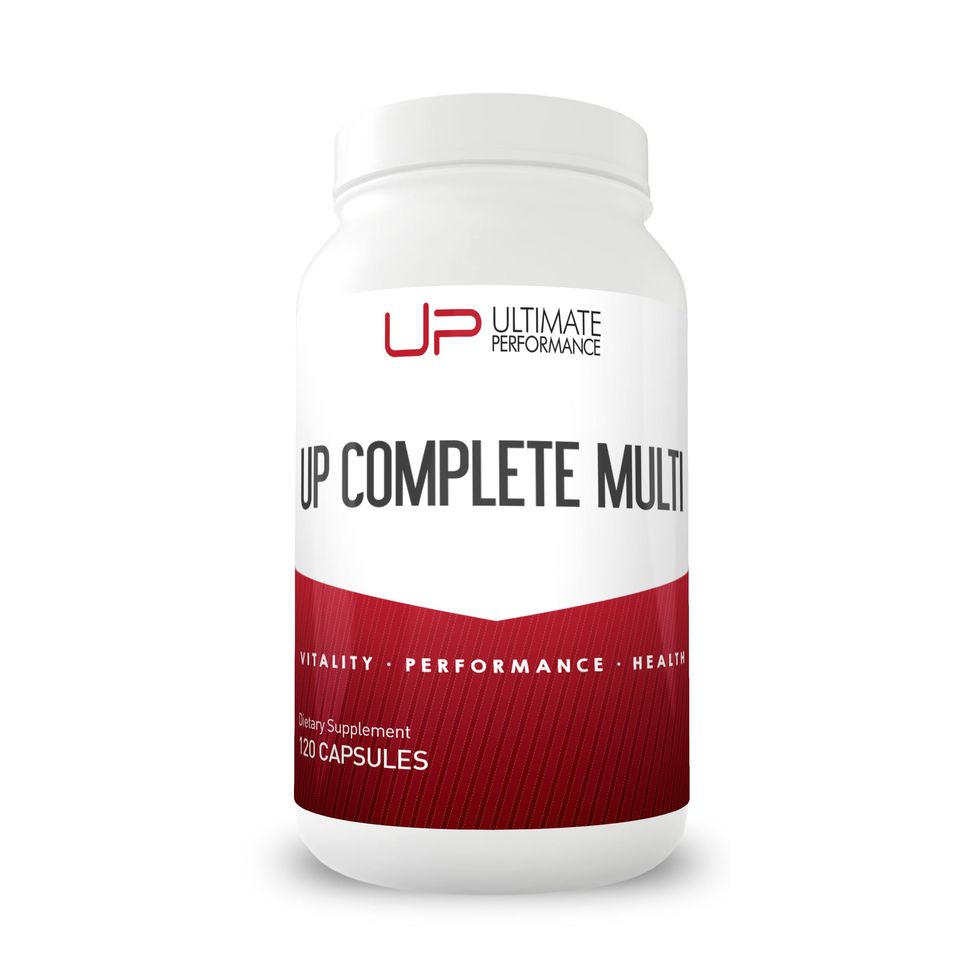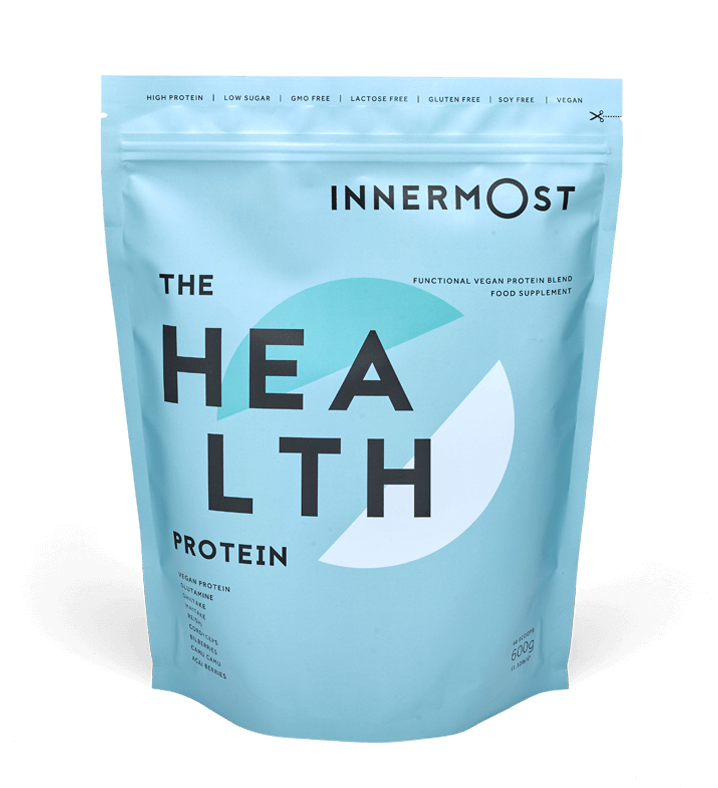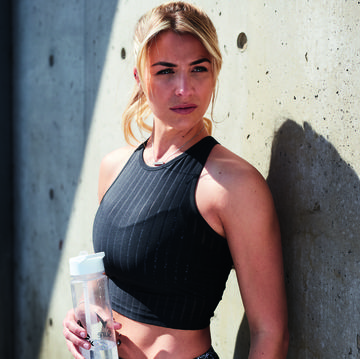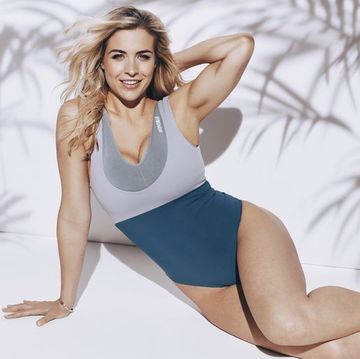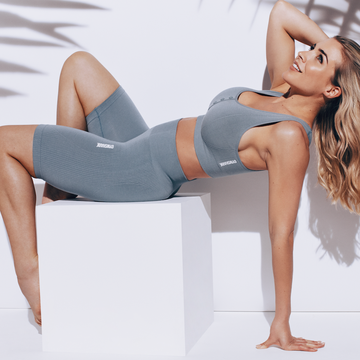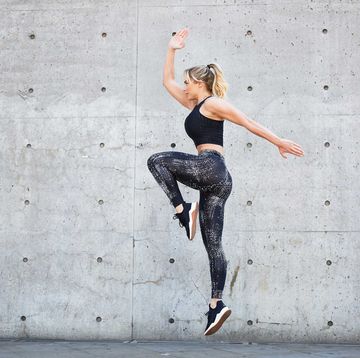Gemma Atkinson's strength training routine is no small thing. Women's Health's senior fitness writer Morgan Fargo committed to following it for 4 weeks...
Things we know about Gemma Atkinson: She's mum to adorable daughter Mia, a former WH cover star, Strictly Come Dancing contestant, radio DJ and dedicated fitness enthusiast. Regularly sharing behind the scenes of her workouts, stretch sessions, low motivation points and how she approaches her diet, Atkinson somehow manages to make it all look (with tight scheduling) possible. Not only that, she keeps it real. Down to earth. Relatable.
Now, not every day is a great day (something GA's big on recognising) but that doesn't mean you have to shirk your goals. In fact, taking care of ourselves mentally and physically (and that includes eating a pizza when you want to) is a crucial part of how she stays so well.
With such a glowing rap sheet, it was only a matter of time until I attempted to train the way she trains. I had already tried her weighted vest workout but I wanted to try something longer – more like the weekly strength training routine she smashes out. Enter Ultimate Performance, Gemma's go-to personal training gym and a place she credits for getting her back in a routine that helps her progress mentally and physically.
I worked with the team at UP for four weeks, following the gym workout plan Gemma had done with them previously. It was hard work, focused on fatiguing each muscle group regularly with resistance training and keeping my NEAT exercise (daily movement) high throughout the day. Even my sleep and stress were put under the microscope – both keys to making gains in the gym and out.
So, if you're ready, read on for everything I learned training like Gemma Atkinson for a month.
1. Following a consistent plan is the key to seeing progress
A while ago I read that "random training gets you random results" and it really stuck with me. Workouts that you try your hand at for a week or two without much consistency aren't the way to improve strength and build muscle. In fact, you're most likely stagnating in a number of areas. Decidedly not the one.
Instead, my plan with Ultimate Performance Fitness was grounded largely in similarity – each week the workout structure would stay the same: three full-body strength training workouts in the Mayfair gym and one at home (as well as one cardio workout per week), equipped with my dumbbells, kettlebells and trusty resistance bands.
The basis of the programme was two workouts repeated twice per week for a total of four strength training workouts:
- Session 1 targeted the front of my upper body and back of my lower body (calves, hamstrings, glutes, biceps and abdominals)
- Session 2 worked the back of my upper body and the front of my lower body (triceps, back, quads and core)
By the end of it, I'd increased my leg press from 100kg to 165kg, as well as my deadlift from 50kg to 65kg, split squat from 9kg to 12kg (with my front foot elevated) and chest press from 9kg to 13kg. These strength gains were based on consistency, repetition and understanding even one more rep or adding half a kg to a dumbbell was a huge improvement in our development quest.
2. Full body strength training is the basis of all her training
The workout split Ultimate Performance champion is one that hits all muscle groups twice in one week with one cardio home workout and two rest days. This means you don't miss out if life gets in the way or you're only able to train three times a week, for example.
As mentioned, workout one focused on the back of my lower body and front of my upper body, including exercises like:
- deadlifts
- bench presses
- chest presses
- glute hyperextension
- bicep curls
- weighted crunches
- weighted prowler pushes (finisher exercise)
In workout two it was all about the back of my upper body and front of my lower body. We did:
- front foot elevated split squats
- seated cable rows
- supine tricep extensions
- leg presses
- lat pulldowns
- tricep pushdowns
- weighted sled pull (finisher exercise)
These workouts were repeated twice each week.
For someone as busy as Gemma, training in this way means you're exercising smartly. Rather than fatigue the same muscle group multiple times (looking at you leg day warriors), you work them in rotation, meaning your gains are expedited. Faster strength and muscle gains? We are about it.
'We use a full-body program that utilises paired sets to provide a time-efficient workout for our clients, many of whom are ‘time-poor’ professionals who want the maximum results in the minimum time possible,' says Ultimate Performance trainer Matt Parsons.
'So, we pair exercises that don’t interfere or crossover, like upper and lower body, or push and pull exercises, so we can rest one muscle group while training another. Training in this way means we can essentially do more work in less time, and get better results in each session we have with our clients.'
'Using a full-body program, rather than training specific muscle groups, means we can "spread the fatigue" across the whole body. Essentially, we can train each muscle group harder without being limited by fatigue that we would experience if we were doing a whole workout of leg exercises or arm exercises, for example.'
3. Her workouts are time-efficient, following a superset-focused structure
Not everyone has hours to give to their workout each day – in fact, I don't think I've ever met anyone who can (besides Nicola Adams, that is). Instead, an efficient workout split that chases PBs without throwing your to-do list out the window is the way forward and a key part of Ultimate Performance's offering.
Following a "paired sets" approach, exercises are coupled together in supersets. In situ, this looks like doing 8-12 deadlift reps followed by 8 to 12 barbell presses. You'd repeat the superset three times through. By the end of it, you've hit three sets of two exercises and worked two different body parts, allowing each to rest while you work the other. If it's time-efficient training you're after, this really is the way to go.
When done properly (e.g. not blabbing or faffing around) you can get four supersets and a finisher done in an hour or just over – a very respectable amount of time to spend on a gym workout, if you're systematically working towards clear goals, IMO.
4. Walking should make up a large chunk of your daily movement
Hands up if your daily movement radically changed when life moved totally to the four walls of your home and the occasional plod around the park? Yep, mine is firmly in the air too, don't worry.
So, when my Ultimate Performance plan asked me to do a minimum of 12,000 steps per day, I was intimidated. How could I more than double what I had grown used to during the oscillating, endless lockdowns? Well, with a little planning, some help from my unbelievably handy Mobvoi folding treadmill from and downloading hours of podcasts to accompany me on my walks.
Before, in "precedented times" the microbursts of activity in my day (walking to and from the station, popping out for a lunchtime jaunt from the WH offices, heading to the gym after work and walking home afterwards would all add up to a respectable amount of daily movement – and that's before you throw my workouts in the mix. Commuting from my bed to the desk next to my bed... not so much.
Tasked with getting these steps done I set out every lunch break for an hour, walking at a brisk pace and did a short loop after work to make up the final ones. On days this set-up was possible, it worked a treat. On training days walking to and from Ultimate Performance, Mayfair made up 95% of the steps I needed to get, the remaining 5% consisting of general movement.
The brainboxes at Ultimate Performance believe walking is the best way to keep your heart healthy, manage your body weight and help lose body fat without stressing your nervous system out in the process. A low-impact form of exercise, it helps improve mental health, reduces how sedentary you are day-to-day and, I found, improve how well I slept at night.
'Your daily activity levels are a significant contributor to your daily energy expenditure – and therefore make a very effective tool for accelerating fat loss,' says Parsons. 'Walking or counting your steps provides a great low-impact form of activity to increase your energy expenditure, which can easily be factored into your daily routine.'
'It doesn’t interfere with weight training performance, like some types of formal cardio, it will aid recovery and enables our clients to get outside in the fresh air. This form of activity is easy to track automatically on your phone or fitness watch, compared to something like cycling.'
By the end of it, I was consistently walking 12,000 steps per day and found the prospect of an hour's walk more of a treat than a trick. Now, a few months later, it's balanced out at around 9-11k, which I think is one of the biggest wins.
5. Mediocre sleep won't cut it when you're training this hard
Training like Gemma for a month saw my unhealthy pre-bedtime ritual of endless scrolling go out the window for a couple of reasons.
Firstly, I was really tired. My body was under stress during my workouts, my stamina used up during my daily steps and my brain frazzled after working and trying to get it all in. There simply wasn't time to scroll – I was passing out as soon as my head hit the pillow.
Secondly, there was no way I would have been able to sustain the workout routine UP Fitness prescribed if I had been shirking on my Z's. No way, no how. When you sleep your body does a lot of the heavy lifting to get you back to your best. Without it, delayed onset muscle soreness (aka DOMS pain) can take longer to subside, your cognitive function (read: good attitude) comes under fire and physical performance heads south, fast.
Whilst I don't have access to GA's sleep tracker, I'll bet you ready money she's taking her downtime as seriously as her gym time – it's the only way to maintain a routine like hers.
6. Active recovery is non-negotiable
Sacking off cooldown exercises, not stretching (ever) and going from workout to desk chair for 7 hours sitting down are all ways to hamper your strength gains. Ultimate Performance recommended I foam roll, muscle gun and stretch before bed and, where possible, walk home from gym sessions.
All of these recovery techniques used in tandem meant that I was giving my body the best chance of repairing and recovering ahead of my next workout. This allowed me to keep my strength going up every session, something that buoyed my confidence and kept me coming back in a positive frame of mind.
A learning curve for someone who has always seen the post-workout stretch session as "recommended but not compulsory", I loved how much more loose and limber I felt going to bed and waking up in the morning.
7. Supplements can be beneficial
Finally, we get to supplements – the nutritional add-ons that helped expedite my progress, repair the muscle tissue I'd broken down, help with digestion and sleep more deeply.
(The exact breakdown for everyone is different and based on the initial consultation you have with your Ultimate Performance trainer.)
For me, I needed help with energy and fatigue, getting my daily greens in and hormonal support – something Ultimate Performance say is a common one between their clients. Let's look at how each prescribed supplement helped me get stronger each week:
Multivitamins
'Multivitamins help us cover all nutritional bases and support the optimal functioning of the body, especially when a calorie deficit is in place.'
D3
'Vitamin D3 helps support mood, immune function and helps reduce tiredness and fatigue. It is vital in Western countries, like the UK, where Vitamin D deficiencies are so common.'
Magnesium
'Magnesium to help replenish the body after training and is also key in aiding recovery and supporting restorative sleep – vital on a body transformation program.'
Protein
A non-prescribed but crucial part of my supplement journey was a protein powder that packed a nutritional punch, turbocharged my recovery and added a delicious hit to most mornings was a brilliant protein powder. I plumped for Innermost's chocolate and vanilla protein powder to bulk up morning smoothies, post-workout shakes, protein pancakes and protein porridge. Yum.
Final verdict
Training like Gemma Atkinson was no easy feat. Not only did I have to dedicate a lot of time to planning (it's essential if you're going to get your workout, steps and sleep on point) but pushing myself harder than I ever had in the gym was a revelation too.
What I'm taking away from the experience is that there are always ways we cheat our progress on the gym floor, like rushing reps, not keeping an eye on form or working with a weight we know is too light. These are all ways we shortchange what we're able to achieve. Working with Ultimate Performance and having someone hold me accountable to reach my potential was game-changing and has made me a lot firmer with myself now. It takes a boatload of mental strength to push when you would do anything to give up but the more I flexed my determination muscle the more it paid dividends.
I thought working out like Gemma Atkinson would teach me about structuring a workout plan properly and staying consistent, I didn't realise it would also show me how to knuckle down and push through hard times, too.
Ultimate Performance is a leading global personal training gym with 1:1, online and virtual training packages depending on your preference. Find out more at ultimateperformance.com.




